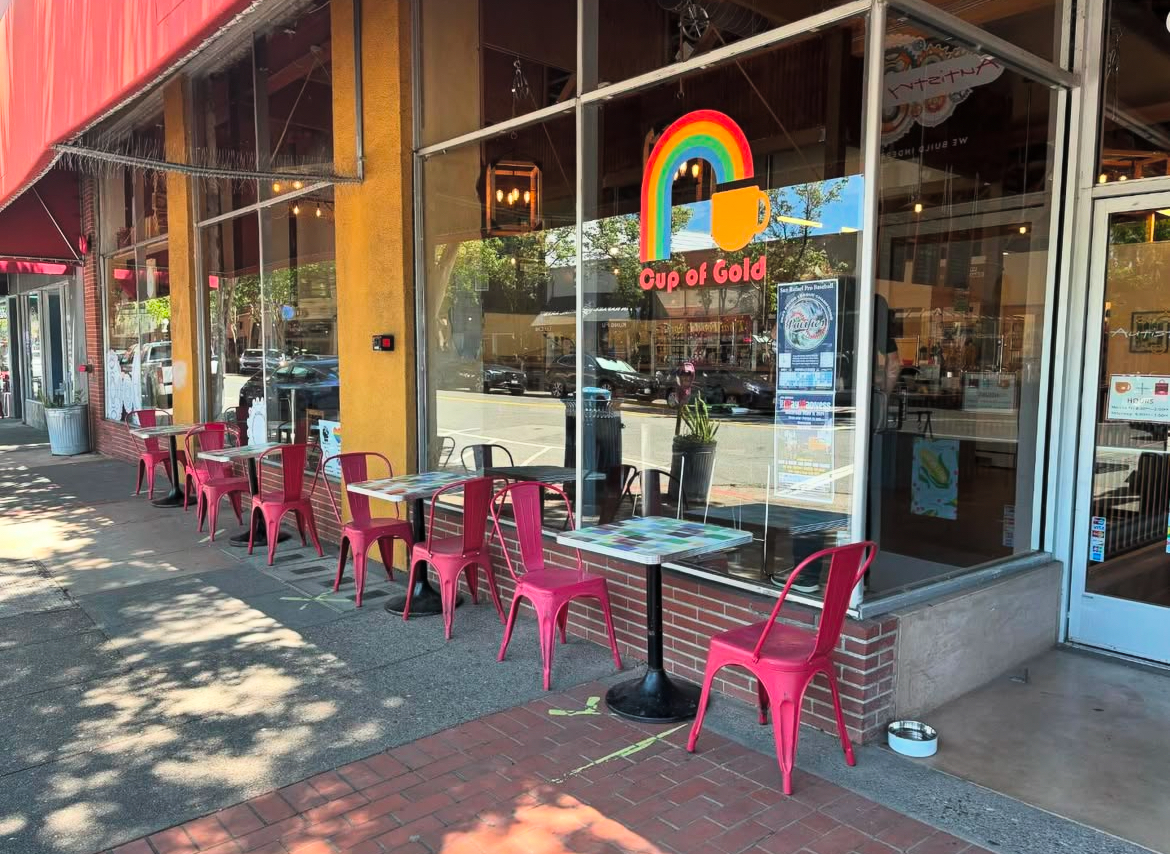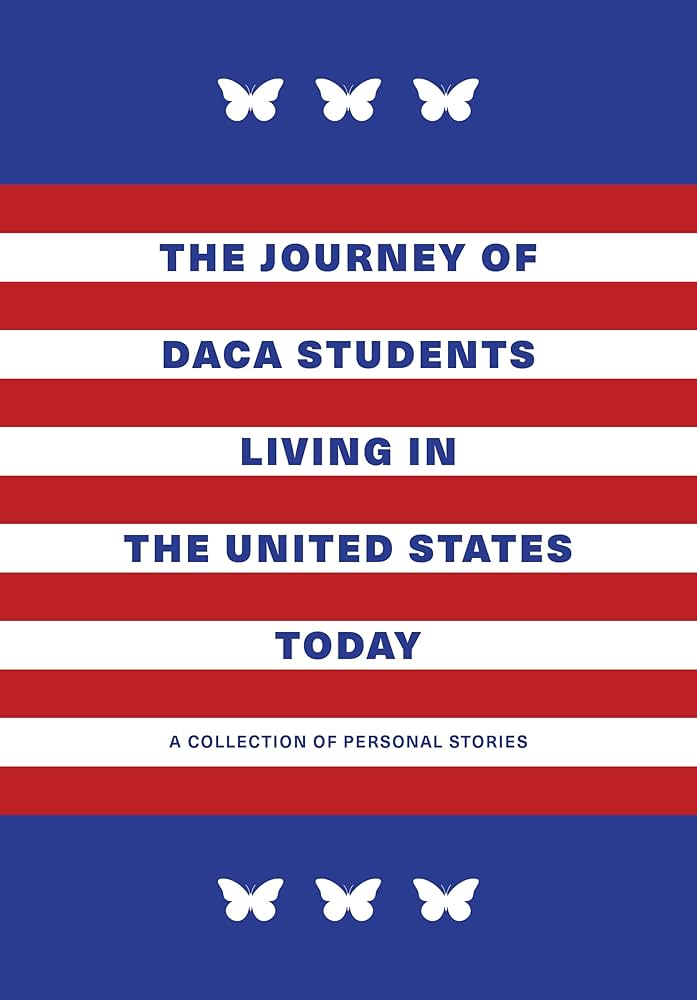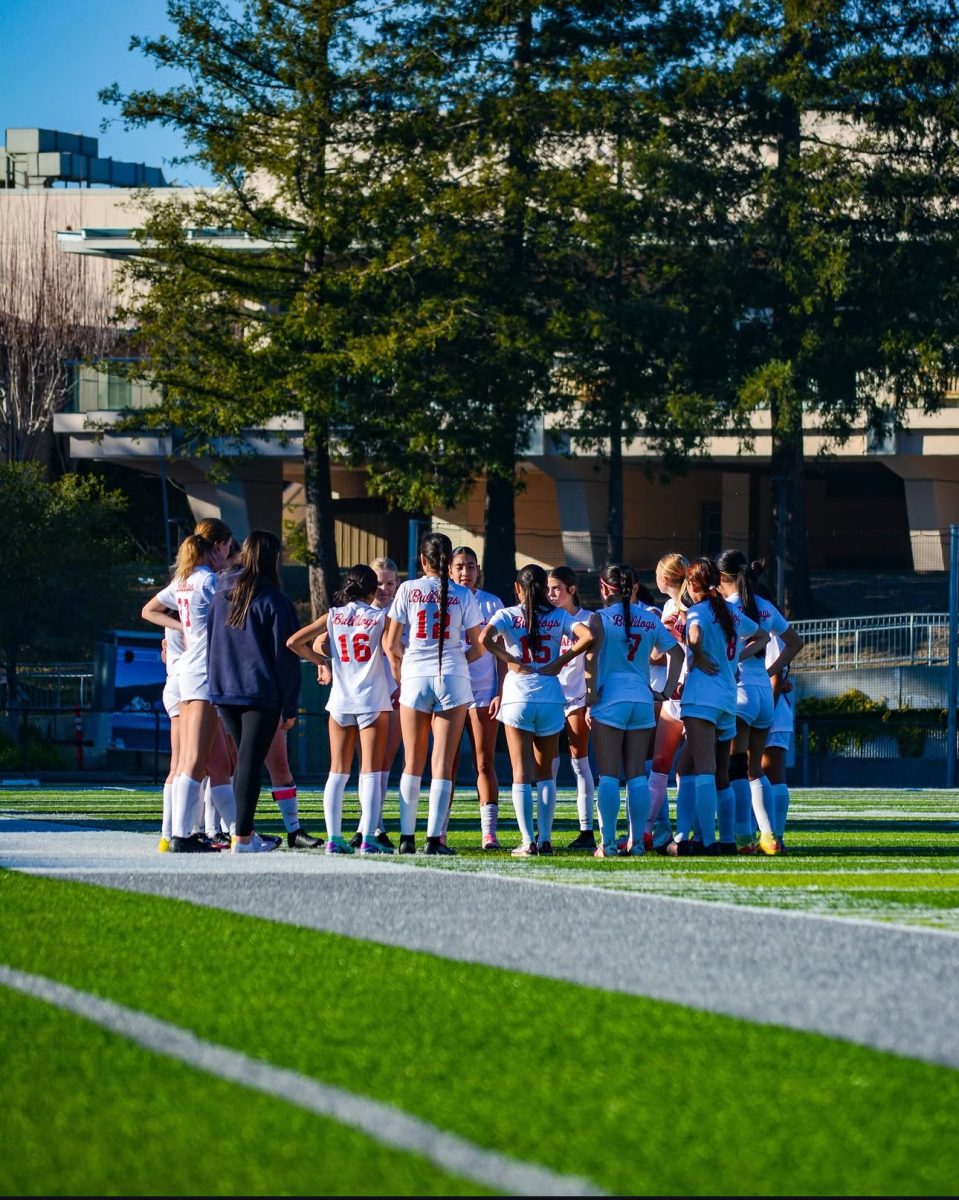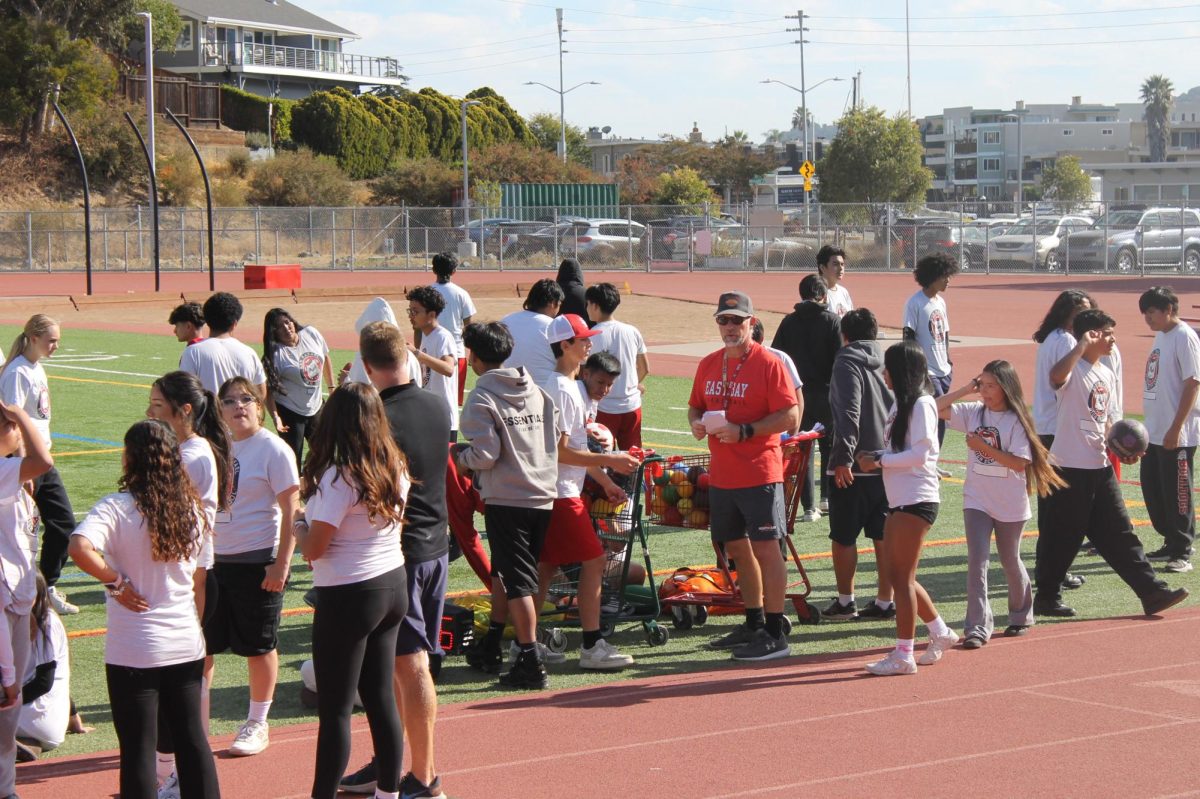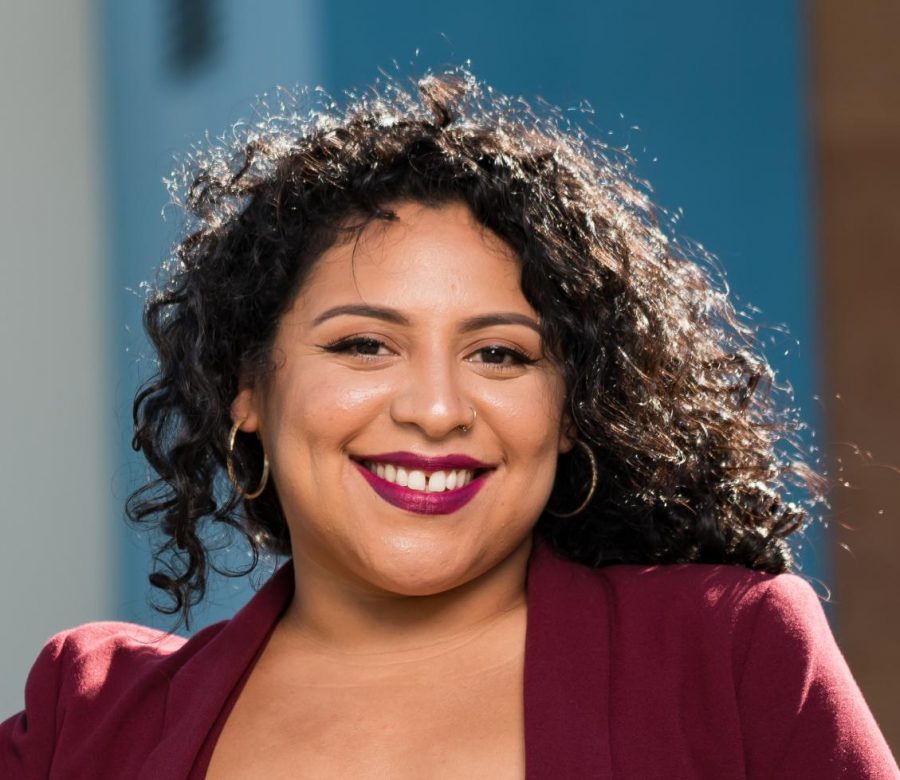A Voice from the Shadows: Samantha Ramirez’s Campaign for Academic Equality
October 22, 2020
A young woman leads a small, but passionate crowd down the streets of San Rafael. As the group is cheered on by onlookers, they proudly raise their hand-held signs into the air and chant in unison: “Justice.”
I didn’t know it then, but that Friday was the first time I saw Samantha Ramirez.
Samantha was never a person whose presence went undetected in a room. As her sister Gabriella Ramirez puts it, “Sammy has always been loud and bubbly. She’s definitely a force of nature. When she was a kid her parents used to call her terremoto, which means earthquake in Spanish.”
And true to her nickname, Samantha is doing her very best to shake up the institutionalized racism she believes affects San Rafael.
This November, Samantha’s name is on the ballot for the San Rafael School Board. Running on a campaign for equity, Samantha hopes to provide representation for the Latinx community as well as provide more opportunities for all students in the San Rafael community.
When I asked Samantha what inspired her to run for a board position, she said, “I think that with the issues of police brutality, all the inequalities and racism, and just kind of the turning point that our society is in, it’s really important to center black and brown voices and experiences. Because of my lived experiences with inequity I can really be a bridge to the community through languages and through generations.”
Samantha’s parents emigrated to the United States in the 1980s. They lived in San Francisco and San Diego before moving to San Rafael when Samantha was in first grade. She grew up among the Latinx community in Marin, occasionally feeling the brunt of a system set up against her. Samantha attended elementary school at Venetia Valley and then spent three years at Terra Linda High School. In her senior year, she transferred to San Rafael High School, graduating with the class of 2007. “I felt like I wanted to have a more traditional high school experience and a lot of my other friends were at SR,” explained Samantha when I asked why she transferred. “I guess there was also more inclusion and more diversity at SR at that time.”
Her sister Gabriella shared a similar experience to Samantha, describing both of their time at TL as having “definitely a lot more of a white influence.”
Samantha went on to the City College of San Francisco, where she participated in the Metro Health Academy transfer Program and graduated in 5 years from San Francisco State with a bachelors in social work. “I was the first in my family to graduate college,” she explained.
The first thing that people tell me when I ask about Samantha is how big of an impact she has on the community. Even in high school, Samantha volunteered with the Huckleberry Youth Center. She focused on educating teens about the things the school didn’t want to talk about, such as sexual health. During and after college, Samantha continued to help her community through working with the After-School Program Coordinator at Venetia Valley School from 2014 to 2018, as well as working at Canal Alliance, and Bay Area Community Resources.
“I think that the work that I did being a peer health educator at Huckleberry put me on this track of giving back to my community, so it kind of exposed me to the nonprofit world,” said Samantha. “I felt really passionate about connecting my community to resources, so I think that that was a turning point in my life.”
When I asked Marjorie Delgadillo, a coworker of Samantha’s, about her influence on the community, Delgadillo said Samantha is “a leader among her peers. She’s got one of those things that you can’t teach somebody, which is community engagement, and she really authentically connects to the community.” Samantha’s strong connection to the Latinx community can be partially attributed to her work and support with their early childhood education at Venetia Valley.
Since Samantha has had so many community jobs, she has a far reaching influence in the community. “A lot of people in a lot of families are very grateful to her,” says Gabriella Ramirez, “She is able to get into our local community and find people who needed help and needed a voice.”
Samantha is the kind of person who just sees things as they are. According to her sister, “In school, when some of the teachers minimized the Latinos intelligence, Sammywas really quick to notice things like that.” Today, Samantha is still quick to call out any racism or microaggressions she witnesses.
“In high school, I definitely felt like people had low expectations for me,” said Samantha. “I’ve experienced racism my whole life, but I haven’t always had the language to communicate it.”
Samantha believes that what’s problematic about racism in Marin is that “because there’s no lynching of people or things like that, many people think that it’s not that bad. But really, it’s more like making Latinos feel less worthy, and minorities receiving less opportunities. It’s more institutional racism in Marin than interpersonal.”
When I asked Samantha if there was a specific memory that came to mind, she brought up working as a nanny. She described how she was “driving a Mercedes, and shopping at Whole Foods all the time.” Samantha was spending her time with a very affluent family on the weekends, and then during the week she was working at the Title One, low-income school of Venetia Valley. “It allowed me to really live with the inequalities within Marin County,” she explained, “So seeing the disparities in Marin going from Mill Valley to San Rafael and things like that, really shaped me a lot.”
In San Rafael City Schools, over 50% of the student population is Latinx, yet they have no board representation. The reason for this is that most people who would want to run for office would have to stop working in order to successfully campaign. Most often, this requires a certain level of affluence typically possessed by those from the whiter, wealthier neighborhoods in Marin.
“You have to pay people of color so that they can leave their jobs to focus on this work,” says Samantha, “and we haven’t historically been able to do that because we are low income. I still have a full-time job working with children while I’m running for office. I don’t have the luxury to not do that.”
Naedy Mendoza, a Senior at SRHS and member of the Marin County Youth Commission, which Samantha Supervises, explained to me that “it’s super important to have [Latinx] representation in the Board of Education mostly since the majority of the population of San Rafael are Latinos. I think that if [Samantha] would be on the Board of Education she would truly be able to open doors and grant new opportunities for people of color. I can’t remember a Latinx person stepping up to be on the Board of Education.”
“Even if I don’t win,” says Samantha, “I am so excited to work with the young people and work with the community, because my campaign, our campaign, it’s starting a movement. People are supporting it, people are saying yes, we need this. So definitely there’s some people who are ready to do that work, it’s really exciting.”
Samantha lives like many of the Latinx the students and their families. Her experiences are essentially parallel: the daughter of immigrants growing up in San Rafael. Her immigrant parents have influenced Samantha significantly. “She has their work ethic,” says Gabriella. “Growing up, we saw that they want to provide more for us. My sister and I are both so proud of them, because they’re hard-working immigrants and they always wanted a better future for us, their family and their children. Sammy wants to do that herself, for her students. She wants to show them when it’s like if you work really hard, not just for school but if you treat others well, that opens a lot of doors for you. She is the embodiment of the community here.”
“In Spanish there is this great word, Chispa, which is like a spark,” says Marjorie Delgadillo. “[Samantha is] like this bright ember, and it is a small but mighty sort of break-off of a bigger fire. She really burns bright with the passion that she carries for community. She is the daughter of immigrants. She has had firsthand lived experience of what it is like to be a child of immigrants, and that is something again that can’t really be taught, it can only be felt and lived. And that is many of our experiences here in Marin County, those who live in the shadows. And I think Samantha has got this bright ember and she is bringing forth that light.”


